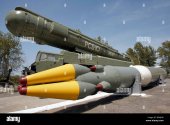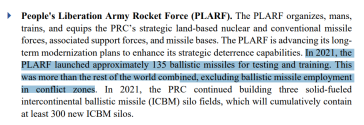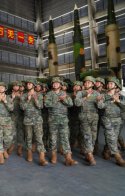it is prudent to keep DF11/15 in service until AR. looking at Russia's experience (not the same, i know) those will come in handy.
at the very least, they could be used to sustain a rate of fire and keep Taiwan's air defence on its toes.
There is no point in keeping DF-15s, let alone DF-11s in active service with PLARF beyond training and wasting Wanwanese (and perhaps some Japanese and Indian) SAMs.
And TBH, given the increasingly larger and challenging battlefield, more dynamic and complex C4ISTAR and networking capabilities, and the ever-advancing standoff missiles that can fly farther and be more lethal than ever, I don't think the PLARF should operate SRBMs (< 1000 kilometers) in the future.
Instead, it'd be more conductive for the PLARF to specialize and streamline on strike missions against targets in the quadruple digits of kilometers and above (i.e. >1000 kilometers). Let the PLAGF take over the strike responsibilities against targets in triple digits of kilometers and below (<1000 kilometers).
We already know that the 750mm TBMs launched by the PHL-16 of the PLAGF are capable of reaching ~600 kilometers (or more), and that the OpFires to be operated by the US Army are slated for 1000 miles (~1600 kilometers) as the cheaper complementary option to the LRHW.
What the PLAGF can actually do is by further "hypersonizing" and extending their MLRS such that they can strike targets that are much further away than what they're currently capable of. Having a range of 1000 kilometers as the standard maximum range, with additional range leading to 1500 kilometers as the absolute celling with any potential further developments (which should also be able of complementing DF-16 nicely).
Speaking of which, there's the DF-17 TEL vehicle, which can be used for this new type of ULR-MLRS for shared parts commonality and reduced developmental, procurement and maintenance costs. So there's that.
Here's 1000 kilometers (Taiwan, Okinawa, Korean Peninsula and frontline regions of India are within reach):

And here's 1500 kilometers (Taiwan, entirety of Japan, Korean Peninsula, Okinawa, northern Philippines and northern 1/3rd of India including New Delhi can be reached):






